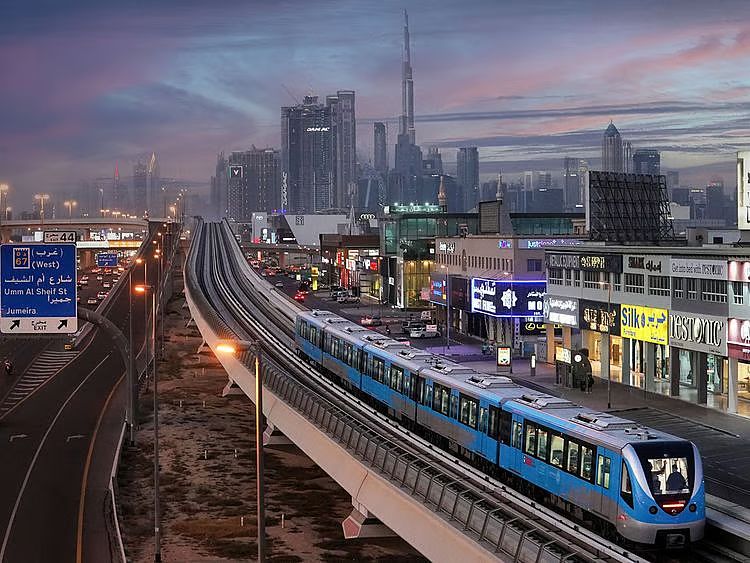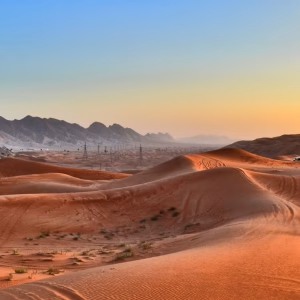When we talk about Dubai Metro milestones, we are looking at more than just the opening of stations or the rolling of trains. It is a story of how a modern transit system transformed a city and set global benchmarks for public transport. On the 16th anniversary of the Dubai Metro, this article explores 16 key milestones that shaped the city’s iconic network and redefined the way people travel in Dubai.
1. Inauguration of the Red Line in 2009
The Dubai Metro officially opened on September 9, 2009, with the launch of the Red Line. The system was groundbreaking for the region, being fully automated and driverless. It connected Rashidiya to Jebel Ali, offering a faster, safer, and cleaner option to the city’s residents and visitors. This launch was not only a milestone for Dubai but also for global transport innovation.
2. Connecting the world through the Expo 2020 extension
One of the most ambitious projects was the Route 2020 extension, linking Jebel Ali to the Expo 2020 site. Even though the global event was held in 2021 due to the pandemic, the extension was completed in time to serve international visitors. This expansion highlighted Dubai’s ability to anticipate urban needs and connect its infrastructure to global opportunities.

3. The Green Line opening in 2011
Just two years later, in September 2011, the Green Line was added to the network. Running from Al Qusais to Al Ghubaiba, the Green Line became vital for residents of Deira and Bur Dubai, offering a reliable alternative to road transport in older, busier parts of the city. This line strengthened the Metro’s reputation as a comprehensive city-wide system.
4. Breaking records with ridership
Within the first year of operation, the Dubai Metro carried more than 100 million passengers. This figure was a clear sign of how quickly residents and tourists embraced the system. The milestone proved that the Metro was not just a showcase project but a necessary lifeline for everyday commuting.

5. The Burj Khalifa/Dubai Mall station
Opening a station near the world’s tallest building and one of the largest malls was a strategic decision. The Burj Khalifa/Dubai Mall station made it easier for millions of visitors to reach Dubai’s top attractions without worrying about traffic. It became a landmark on the Metro route and a symbol of its role in promoting tourism.
6. Expanding to new hubs
As the city grew, so did the Metro. Business Bay, Dubai Marina, and other stations were added to connect major business and residential areas. These expansions reinforced the Metro’s role as an integral part of Dubai’s economic development.
7. Pioneering driverless technology
Long before autonomous vehicles became popular worldwide, the Dubai Metro was already operating without drivers. This advanced technology set global standards for safety and reliability. The fully automated system remains one of its proudest achievements.
8. Nol Card and feeder bus integration
To ensure smooth connectivity, the Metro introduced the Nol Card, a single card that works across metro trains, buses, trams, and even water transport. Feeder buses were also launched to connect neighborhoods with metro stations, ensuring convenience for passengers across the city.
9. Interchange stations for seamless travel
Union and Khalid Bin Al Waleed (BurJuman) stations became major interchanges, allowing passengers to move easily between the Red and Green lines. This development was essential for creating an efficient network where journeys could be completed without hassle.
10. Smart stations with real-time information
From its early days, the Metro was designed as a smart system. Real-time screens, automated announcements, and digital displays ensured passengers were always informed. Climate-controlled stations and trains also provided comfort, making the Metro one of the most user-friendly transport systems.
11. Accessibility for all
The Metro was designed to be inclusive. Stations and trains feature elevators, tactile paths for the visually impaired, designated spaces for wheelchairs, and priority seating. These features made the Metro accessible to people of all abilities, reinforcing its role as a true public service.
12. Extended hours during Ramadan
The Metro has always adapted to Dubai’s cultural and social needs. During Ramadan, when daily routines shift, the system operates with extended hours to serve late-night commuters. This flexibility reflects its ability to align with the lifestyle of the city.
13. Bringing culture and art into transport
Dubai Metro stations are not just functional spaces; many also display artwork inspired by local culture and heritage. These installations enrich the commuting experience, turning a simple journey into a cultural touchpoint.
14. Safety and security innovations
From the start, passenger safety was given top priority. Surveillance systems, blue emergency buttons, and well-trained staff ensure that commuters feel secure. These measures have made the Metro one of the safest modes of transport in the region.
15. A green and sustainable future
By reducing car dependency, the Metro helps cut carbon emissions and supports Dubai’s sustainability goals. The use of electricity-powered trains has positioned it as an eco-friendly transport option. Future plans include even more energy-efficient operations and possibly solar-powered stations.
16. Sixteen years and still growing
Today, as the Metro celebrates its 16th anniversary, it is not just a transport system but a backbone of Dubai’s growth. Plans for new lines and further expansions continue, promising even greater coverage in the years to come. The Metro remains central to Dubai’s vision of being a smart, sustainable, and globally connected city.
The wider impact of the Dubai Metro milestones

These milestones are more than just achievements on paper. They have reshaped the way people live and move around Dubai.
Redefining urban integration
The Metro links residential areas to business hubs, schools, and leisure destinations. It has made commuting affordable, reliable, and predictable, influencing where people choose to live and work.
Reducing road congestion
Sheikh Zayed Road, once infamous for traffic, has seen significant relief thanks to the Metro. With more people leaving their cars behind, the city enjoys smoother traffic flow and less pollution.
Boosting the economy
Property values near Metro stations have increased, and businesses have flourished due to higher foot traffic. The Metro is not just a transport solution but also an economic driver.
Enhancing Dubai’s global image
The Metro has strengthened Dubai’s reputation as a futuristic, smart city. Tourists and investors see the Metro as a symbol of the city’s forward-thinking approach.
Connecting communities
Perhaps one of the most important achievements is how the Metro has connected diverse communities. It is a shared space where people of different cultures, languages, and professions come together daily.
Looking ahead: The next chapter of Dubai Metro milestones
The Dubai Metro is far from finished. Future milestones may include new Purple or Blue Lines, more advanced technologies such as AI-driven systems, and even greener energy solutions. Each step will add to its legacy as one of the most advanced metro systems in the world.
Conclusion
The story of the Dubai Metro is one of vision, planning, and achievement. Over 16 years, it has not only moved millions of people but also transformed the city itself. From the opening of the Red Line to sustainability initiatives, each milestone reflects Dubai’s ambition to stay ahead of the curve. As it enters its next chapter, the Dubai Metro will continue to play a vital role in shaping the future of the city.
Do follow UAE Stories on Instagram
Read Next – Blood Moon 2025 Over Dubai’s Burj Khalifa: Stunning Timelapse














